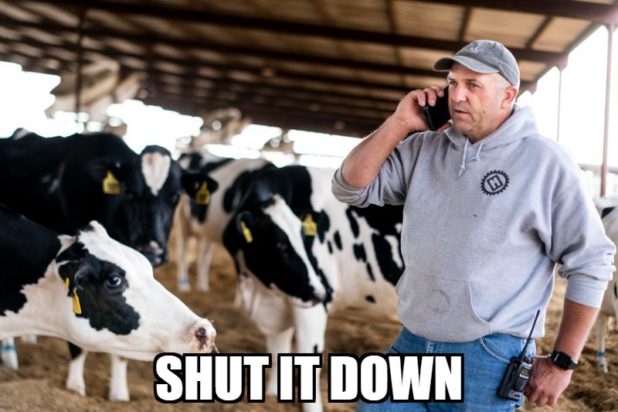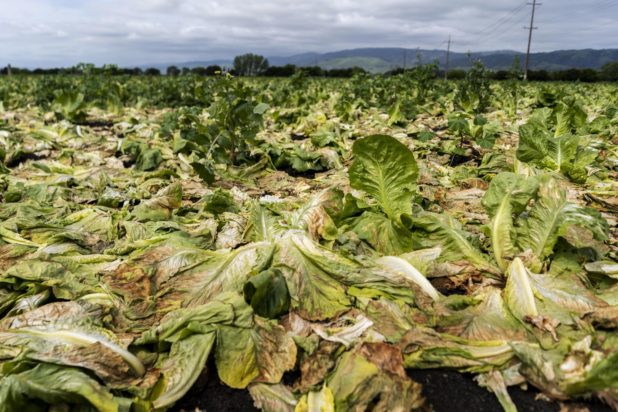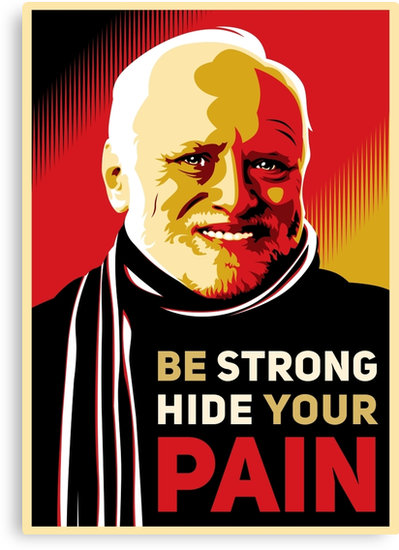Just for the record, people aren’t eating less food.
So, try to imagine, if you will, a system that tells producers to produce food, and then one day tells them to just go ahead and destroy it. As the need for food stays the same.
It would look something like this.
Farmers in the upper Midwest euthanize their baby pigs because the slaughterhouses are backing up or closing, while dairy owners in the region dump thousands of gallons of milk a day. In Salinas, Calif., rows of ripe iceberg, romaine and red-leaf lettuce shrivel in the spring sun, waiting to be plowed back into the earth.
Drone footage shows a 1.5-mile-long line of cars waiting their turn at a drive-through food bank in Miami. In Dallas, schools serve well north of 500,000 meals on each service day, cars rolling slowly past stations of ice chests and insulated bags as food service employees, volunteers and substitute teachers hand milk and meal packets through the windows.
Across the country, an unprecedented disconnect is emerging between where food is produced and the food banks and low-income neighborhoods that desperately need it. American farmers, ranchers, other food producers and poverty advocates have been asking the federal government to help overcome breakdowns in a food distribution system that have led to producers dumping food while Americans go hungry.
The classic argument against libertarian memeball laissez-faire capitalism is the problem of cost externalizing, in which some types of economic activity generate costs for third parties. For example, if someone drives a car in a congested city with low air quality, they benefit themselves, but push costs onto everyone who breathes the air or uses the road.
In this case, destroying all of this food dumps costs onto everyone who would have eaten it, because now we have to find something else to eat.
Thanks, business.
Late last week, the Trump administration stepped in, announcing a $19 billion program to help the struggling agriculture sector and distribute food to families in need. The aid package includes the government purchase of $3 billion in dairy, produce and meat products that will go to food banks and those in need. (About $16 billion is going to direct payments to farmers and ranchers.)
Why buy their food products, when you can give free money directly to producers who are destroying food?
Thanks, government.
But the effort must overcome the challenges that led to the disconnect in the first place: Fresh produce and dairy must be transported from farms to food banks in refrigerated trucks. Refrigerator and freezer storage space must be available on the receiving end to accommodate a surge of frozen meat. Food that originally was slated for restaurant supply must be repackaged for home use. And all of this must occur while maintaining social distancing and without increasing the demand for labor because food banks, while running low on supplies, are running even lower on volunteers.
26 million people are now newly unemployed, and food banks are running out of labor.
Thanks, communities.
Food banks and other organizations focused on food insecurity struggle with transportation even under normal conditions, because it’s costly and because transportation and storage don’t lend themselves to donations, says Karen Smilowitz, an industrial engineering professor at Northwestern University. Transport and storage of food requires specialized equipment and must be regulated for safety. It’s costly, she says, plus the tax advantages aren’t as good for donated work.
You would like to know why no one set up the food supply chain to be resilient to crisis? Well, let me tell you a thing or two about the tax code…
Over the past six weeks, the networks of food banks that collect surplus farm commodities and donated food from grocery stores and restaurants and distribute it to needy Americans have facedunprecedented demand because of record unemployment and a dramatic increase in households reporting food insecurity.
The U.S. Department of Agriculture’s most recent hunger report, published in September 2019, estimated that 37 million people were food-insecure in the United States. Feeding America, a nationwide network of more than 200 food banks, predicts an additional 17.1 million Americans will have trouble feeding themselves and their families as a result of the pandemic.
In normal times, these big food banks distribute food to smaller community pantries and faith-based soup kitchens and shelters. Many of these have suspended operation because of a lack of volunteers and the challenges of maintaining safe social distancing.
That leaves the food banks as the primary distributors to those in need. In a Feeding America study last week, nearly all food banks reported an increase in demand for assistance compared with last year, with an average increase of 70 percent. An estimated 40 percent of the people served in recent weeks are new to food-bank support.
https://www.youtube.com/watch?v=2TsQ18RWkDI
…
Grocery stores typically turn to produce from Mexico because it is cheaper, leaving growers in Florida and California to focus on building relationships with restaurants.
But those restaurants are mostly closed now or struggling along at a fraction of their usual sales volume with takeout orders.
“Without those buyers, and with many farmers markets closed, there are no takers,” says Caleb Burgin, who owns Burgin Farms in Wauchula, Fla., a middleman seller for growers from Florida to Michigan. “Farmers are burning and disking millions of pounds of their ripe fruits and vegetables back into the soil.”
For beef and pork, the supply-chain bottlenecks occurred because of widely reported covid-19 outbreaks that have shut down many meat-processing plants.
…
“There’s a real huge shortage of freezer space in the U.S.,” Hockman said. “And we’re having a huge backup in getting access to containers because Americans aren’t buying anything here so containers aren’t going back and forth between here and China.”
…
But there are hurdles and logjams yet to be tackled, and some food industry experts wonder whether the federal government is up to the challenge. It’s still unclear how food will be transported to where it is needed, and who will pay for the rented refrigerator and freezer trucks necessary to increase storage capacity on-site at food banks. Those details have yet to be worked out.
“Food service trucks distribute that cold product to the restaurants,” Castaneda of the National Milk Producers Federation explained. “Could we use those trucks to take it to the food banks and then have them stay there so food banks have extra on-site cold-storage facilities? Who is going to help pay for that? The federal government is going to have to do things it’s never done before.”
Maybe the government should have kept idle facilities for salting and drying meat, turning milk into cheese, and canning produce, ready to be turned on in case there was such a breakdown in the system of refrigerated, on time delivery?
That seems to me like something that would improve national security, since it would stop people from starving to death because of an EMP, and so it could have been fit into the national security budget. Supposedly, there was a solar storm in 1859 which would have crippled the electrical grid if there had been one at the time, and a similar one in 2012 which missed the earth by nine days.
It would be nice to think that we wouldn’t all starve to death or resort to cannibalism, just because no one had bothered to prepare for the inevitable failure of these fragile, complex, profit-optimized systems that our lives now depend on.
Yes. That would be nice.




